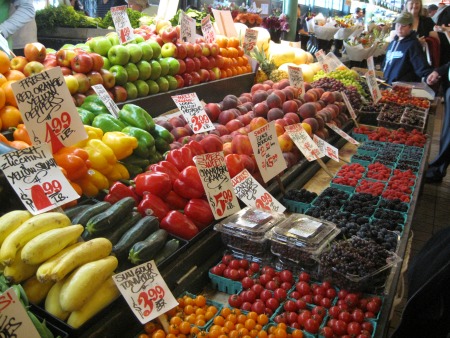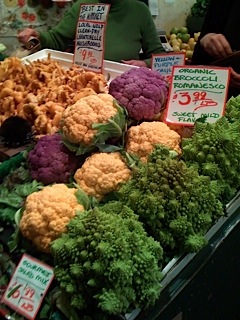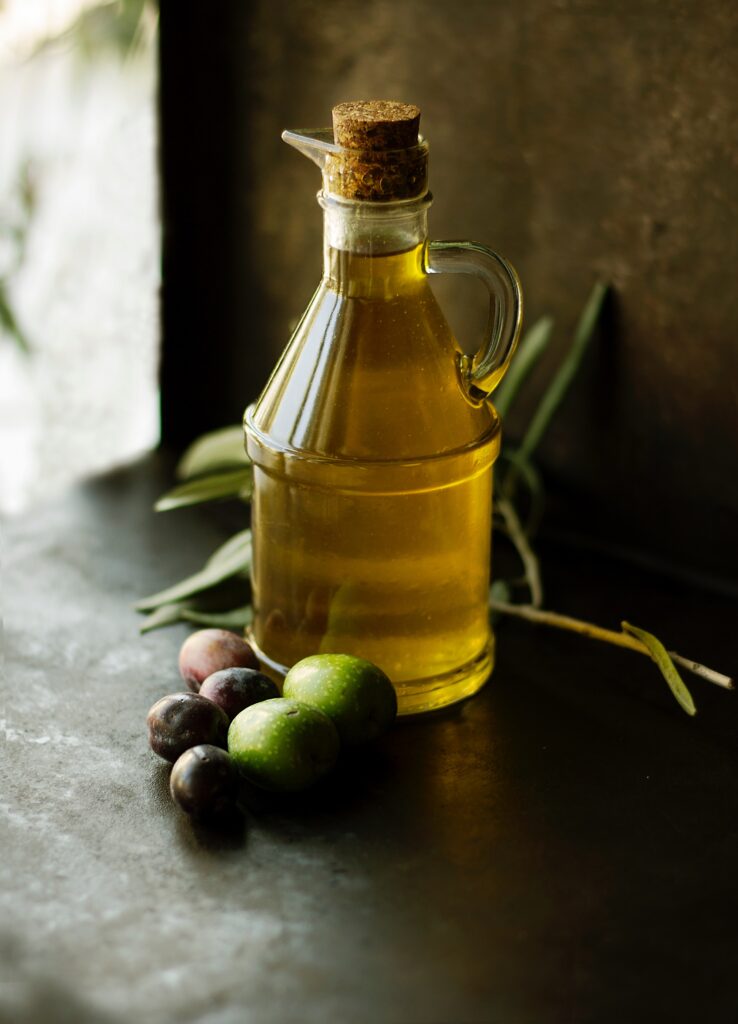Implementing the Med Diet – Part One
Do you think you eat enough plants in your diet? How many plants do you eat in a week? Not refined grains, but plants. You can cook them, boil, bake, microwave, roast them or even eat them raw. How many? Further, it’s not just eating more volume of plants, it’s diversity.
Mediterranean Diet and Plants
Adherence to the Mediterranean diet depends more on plants.
- Vegetables
- Fruits, Tree Nuts, Seeds
- Legumes
- Whole Grains
- Olive oil
When it comes to plants, more is better. But not just in quantity of plants, but also diversity.
Think about this: there is no one plant that can provide all the micronutrients and macronutrients a person needs. We tell vegetarians to use several plant sources for complete proteins, the same is true for any nutrient.
Gut Bugs and Plants
Your gut contains a trillion bugs. There are more of them than of us. But what do they eat? It turns out, most of what they eat are the things we don’t. Gut bugs eat plant parts. Without them eating those plant parts, we would be far worse off. Thus, the gut microbiome is an exciting research field.
Guts break down fiber to chemicals shown to:
- Decrease the risk of colon cancer
- Lower cholesterol
- Decrease blood sugar spikes
- Decrease depression
- Allow absorption of polyphenols
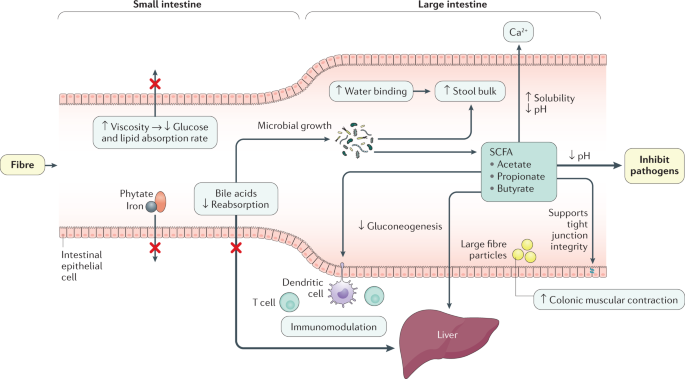
From Gill, S.K., Rossi, M., Bajka, B. et al. Dietary fibre in gastrointestinal health and disease. Nat Rev Gastroenterol Hepatol 18, 101–116 (2021). https://doi.org/10.1038/s41575-020-00375-4
Fiber
When most people think about fiber, they think of regulating their bowels. We all want regular bowel movements. After all, we don’t want to be constipated, nor do we want to be too loose. Finally, fiber is far more interesting and complex than just making you have happy poop.
Fiber is undigestible carbohydrates. Cows can digest fiber, but humans cannot. We lack enzymes to break these particular chemical bonds. But it turns out that the bacteria in our gut can break down that fiber into chemicals we need.
Soluble and Insoluble Fiber
Insoluble fiber is the type of fiber that remains unchanged when it makes its way through the gut. Equally important, soluble fiber is a type of fiber that dissolves in water and forms a gel in your intestine.
Insoluble fiber is important to regulate bowel movements and make them regular. If your stools are too loose, the fiber will add bulk. If your stools are too hard, they will increase bulk and stool water. Thus insoluble fiber is good for your stool, lose or hard.
Soluble fiber is associated with decreasing LDL, decreasing blood glucose spikes.
New Fiber Metrics
Today, we think of fiber as a three dimension spectrum, instead of binary. The important parts of fiber are now thought of to be
- Viscosity
- Fermentability
- Solubility
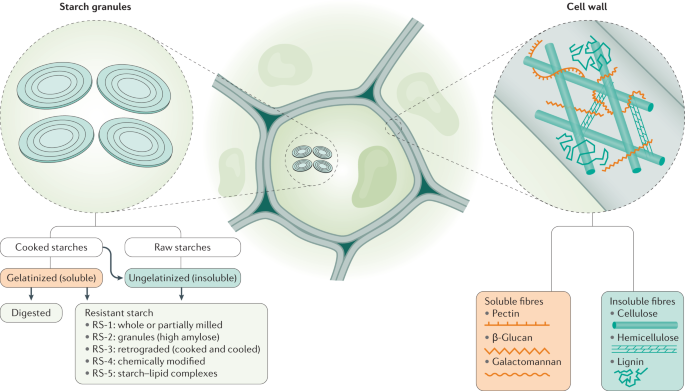
From Gill, S.K., Rossi, M., Bajka, B. et al. Dietary fibre in gastrointestinal health and disease. Nat Rev Gastroenterol Hepatol 18, 101–116 (2021). https://doi.org/10.1038/s41575-020-00375-4
Fiber is an Essential Nutrient
Plants provide vitamins, minerals, macro and micronutrients. A single source of plants cannot provide the nutrients a person requires, which has been the main reason we recommend a diversified diet. Fiber is also a nutrient, an essential nutrient, one that humans cannot make, but without it there is clearly an increase in disease. While those on the extreme of low-carb diets will disagree, the literature is unambiguous.
Myth
Fiber supplements are not a substitute. Some are expensive, one selling for over $150 a month. But no supplement gives you the diversity of nutrients that you can get from your diet. Mother Nature gives you a better deal. So, eat your fiber, don’t buy a supplement.
Now begin to chart your diversity
Today’s assignment is simple: begin to chart the diversity in your diet, so that you increase the sources of your plants. One of my favorite dieticians, Dr. Megan Rossie, suggests a person has 30 plant-based foods per week. Sound impossible? Let’s try it using the Meditereanean Diet.
Why 30?
It isn’t that difficult to implement, but consider that you want to consume the vitamins, minerals, anti-oxidants, and other nutrients and there is no one plant that does this. But many will.
Vegetables:
One Mediterranean diet point is achieved by consuming 9 ounces of vegetables per day. Run through the list of vegetables that you can add to your diet in any given week.
- Asparagus
- Beets
- Bok Choi
- Broccoli
- Brussels Sprouts
- Cabbage
- Cauliflower
- Carrots
- Celery
- Cucumbers
- Eggplant
- Jicama
- Kale
- Leeks
- Lettuce
- Onions
- Parsnips
- Peppers
- Spinach
- Squash
- Tomatillos
- Zucchini
Fruits:
- Apples
- Apricots
- Avocado
- Bananas
- Blueberries
- Cherries
- Coconuts
- Dates
- Grapes
- Grapefruit
- Jackfruit
- Kiwi
- Lemon
- Lime
- Mangos
- Melons
- Nectarines
- Peaches
- Pears
- Pineapple
- Pomegranates
- Plumbs
- Prunes
- Oranges
- Tomato
- Watermelon
Legumes:
- Black beans
- Butter beans
- Chickpeas
- Green beans
- Kidney beans
- Navy beans
- Pinto beans
- Navy beans
- Lentils
- Peanuts
Whole Grains:
- Barley
- Brown Rice
- Buckwheat
- Bulgur
- Corn
- Millet
- Oatmeal
- Whole wheat
- Red rice
Nuts:
- Acorns
- Almonds
- Brazil nuts
- Cashews
- Chesnuts
- Hazelnuts
- Macadamias
- Pecans
- Pine nuts
- Pistachios
- Walnuts
Seeds:
- Chia
- Flax seeds
- Hemp
- Pomegranate
- Poppy seeds
- Pumpkin
- Sesame seeds
- Squash seeds
- Sunflower
These provide a diversity of micronutrients, macronutrients and fiber.
All of which provide a healthy diet.
But let’s not forget one of the most important plants:
Breakfast ideas:
Overnight oats, which in my recipe has oats, chia seeds, and in the morning I add blueberries and peanut butter. There are four different plants.
Lunch ideas:
A whole grain sandwich to which I add: tomatoes, cucumbers, lettuce
Add an apple
The whole grain can have multiple grains in it.
Snack:
A handful of almonds
Dinner:
Want some pasta – how about the sauce? Start the sauce with onions, mushrooms, carrots, garlic, all in olive oil.
You haven’t even had a salad yet.
On this day we have 15.
Tips:
Salads are a great way to add seeds, nuts, and even some legumes.
Buy the mixed vegetables not just the broccoli.
Terry’s Tacos
The standard fast-food taco is a lot of ground beef, a lot of cheese, and a smear of sauce.
My taco is: lots of cabbage which I have for a slaw and other great crunch
My salsa has some amazing fresh ingredients in it like my mango salsa
And cheese and meat are more of a condiment. But you can reduce the meat by using lentils and mushrooms.
Soups:
Vegetables soups in the winter! Lots of additions here for vegetables.
Diversity is not only healthy, but it is delicious.

